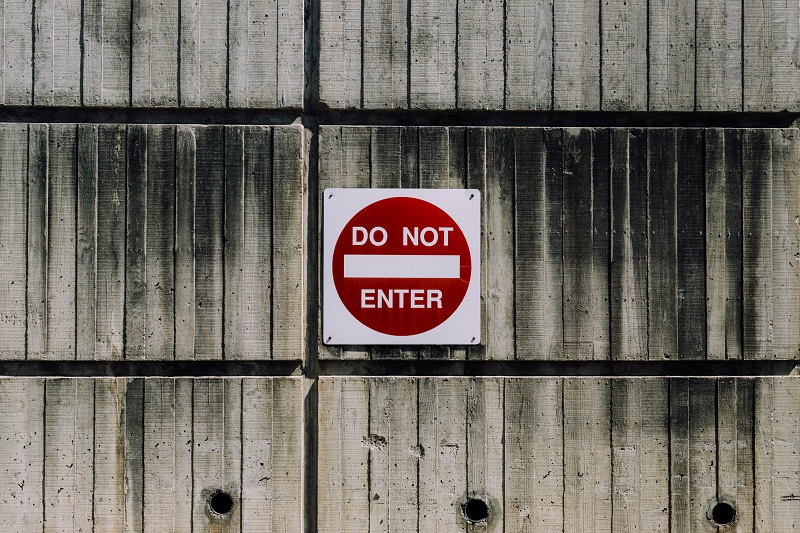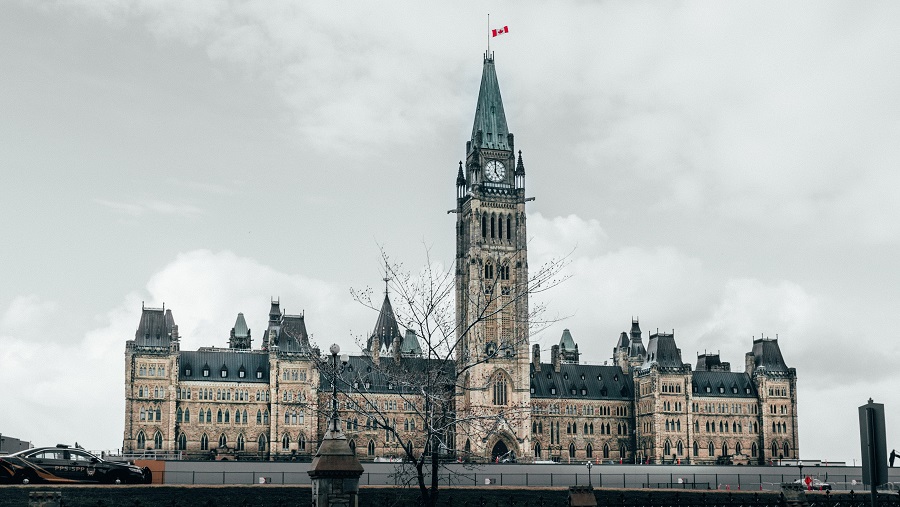Removal Orders Issued for Refugees That Were Directed From Canada Back To The U.S.
The U.S. Breaks Its Promise Not to Deport Asylum Seekers Turned Away At Canadian Border
At least eight asylum seekers received deportation orders from the United States in 2020, according to The Washington Post. Another has already been deported.
The deportation orders were issued despite the fact that, in March 2020, U.S. officials had promised their Canadian counterparts that asylum seekers who were turned away at the Canada-U.S. border wouldn’t be deported upon their return to the U.S.
According to the Safe Third Country Agreement, which is shared between Canada and the U.S., asylum seekers must file their refugee claims in the first “safe” country that they arrive in. Under these rules, asylum seekers attempting to file refugee claims after arriving in Canada from the U.S. are required to return to the U.S. to file a claim there.
Between January 1 and September 23, 2020, Canada turned away 259 asylum seekers attempting to enter Canada from the U.S.
What Happens Now
The Washington Post reported that five of the asylum seekers with deportation orders issued by the U.S. have been exempted from border restrictions by Immigration Minister Marco Mendicino. Meanwhile, another application is pending.
These exemptions mean that the asylum seekers will be allowed to enter Canada if released by the United States. Such exemptions can only be issued in exceptional circumstances that are deemed to be of national interest by Canada's foreign, immigration, or public safety minister.
“While we absolutely welcome this decision and are very happy about it, we’re mindful that this is only a small piece of the puzzle and that the exemption on its own is not a complete solution,” Toronto-based lawyer Kate Webster told The Washington Post.
Webster currently represents six of the asylum seekers and said she had recently received calls from additional people who had been returned to the U.S. where they were detained by U.S. Customs and Immigration Enforcement and placed in removal proceedings.
“I have very serious concerns that there are many more in these circumstances and we just don’t know about them,” Webster said.
Canadian officials would not comment on the cases to The Washington Post, citing a privacy rule. However, a spokesperson for Mendicino stated that the immigration ministry had issued exemptions to refugee claimants seeking entry into Canada from the U.S. “in a number of exceptional circumstances.”
Canada Launches Immigration Programs For Refugees Working In Healthcare
Refugee Healthcare Workers Can Now Apply For Permanent Residence
The Canadian government has announced that refugee claimants who work in the health-care sector and provide care to patients can now apply for permanent residence due to a special measure.
Health care workers have played a crucial role in Canadians’ lives this past year. Many of the health-care workers who have dedicated their time and efforts to supporting the country during a difficult and unpredictable health crisis are refugee claimants. For this reason, the government implemented the new measure, explained Immigration Minister Marco Mendicino, who made the announcement on December 14, 2020.
“Canadians are appreciative of asylum seekers and the work they are doing during the pandemic,” Minister Mendicino said. “Thanks to this special measure, we are recognizing their significant contribution by providing them with a more secure future in Canada."
The program has been in development since this summer, and Minister Mendicino made an official announcement in August. Since then, two public policies have been created: one for refugees in Quebec, and one for refugees in other provinces.
Who Can Apply?
The application is open to health care workers who claimed asylum in Canada before the pandemic began.
Applicants must meet the following set of criteria:
- Pending or failed refugee claimant who claimed asylum before March 13, 2020
- Received a work permit after their claim was issued
- Must have the required work experience in Canada’s health-care sector
- The Applicant and Applicant’s family members must not be inadmissible to Canada
- Applicant must meet Quebec’s immigration and work experience requirements if they plan to live in Quebec.
Additionally, the government is recognizing spouses and common-law partners of refugee claimants who meet the eligibility requirements but have contracted and passed away from COVID-19.. These individuals can apply for permanent residence if they arrived in Canada before August 14, 2020.
What Else Should I Know About The Application Process?
Once an application is filed, its eligibility is considered by Immigration, Refugees, and Citizenship Canada (IIRC). IRCC is accepting applications until August 31, 2021.
“We welcome these special measures for refugee claimants who have stepped up to serve our communities during these unprecedented times,” said the Honourable Arlene Dunn, who is New Brunswick’s Minister Responsible for Immigration, and the Provincial-Territorial Co-Chair of the Forum of Ministers Responsible for Immigration.
“Together with our federal, provincial and territorial colleagues, we strive to support newcomers to participate and succeed within a welcoming Canadian society.”
New Data Reveals Canada Has Turned Back 4,400 Asylum Seekers Since 2016
1,992 Refugees Unsuccessfully Attempted To Enter Canada The Year After Trump Was Elected
At least 4,400 asylum seekers have been turned away by Canadian border officials over the past five years. This is according to recent data released by the federal government in response to a parliamentary request from Member of Parliament, Jenny Kwan.
Nearly half of the 4,400 turned away asylum seekers had attempted to enter Canada in 2017, which is the same year that U.S President Donald Trump took office.
During his Presidential campaign, Trump made several promises related to immigration and refugees, including:
- The deportation of 11 million immigrants
- Terminating former president Barack Obama’s executive orders related to immigration, including eliminating “sanctuary cities”
- Building a wall across the U.S-Mexico border to block irregular border crossings
The Full Break Down of These Figures
In 2016, 742 asylum seekers were turned away by Canada at the border, and by the following year, this number had more than doubled to 1,992. After 2017, this number dipped to 744 in 2018 and 663 in 2019.
Between January 1 and September 23, 2020 — during the peak of the coronavirus pandemic — 259 people were turned back at the border.
According to CBC News, Kwan described the numbers as "really disturbing."
"In the face of a pandemic, things are even more precarious for people who need to get to safety and Canada actually did not hesitate to turn people back," she said.
Kwan added that due to Trump's deportation policies that violate international human rights and anti-refugee statements, Canada becomes "complicit" in the violation of human rights by forcing refugees back to the U.S.
The Safe Third Country Agreement
The decision to block the 4,400 asylum seekers from entering Canada was made in accordance with the Safe Third Country Agreement (STCA).
The STCA, which has been in effect since 2004, designates Canada and the U.S as "safe countries" for refugees and requires asylum seekers to make refugee claims in the first country they arrive in. For refugees that travel to Canada through the U.S, they are required to return to the U.S to file their refugee claims there.
The agreement has faced harsh criticism over the years, with critics and refugee advocacy groups calling the STCA inhumane, as the U.S is not, in fact, a safe country for many refugees, especially while President Trump is in office.
The STCA was even found to infringe on Charter rights by a Federal Court justice earlier this year. However, the federal government is currently appealing this ruling.
IRCC Launches New Online Portal To Expedite Permanent Residence Landings
New Virtual System Has Proven Effective At Accelerating PR Process
Immigration, Refugees and Citizenship Canada (‘IRCC’) has launched a new online portal that gives the department the ability to confirm permanent resident status without conducting in-person interviews. This is expected to accelerate the landing process for many new Canadian permanent residents.
This new system was created in response to the COVID-19 pandemic and has already proven effective at expediting the landing process, according to Immigration Minister, Marco Mendicino. Mendicino spoke about the new system during a recent meeting with the Standing Committee on Citizenship and Immigration.
The portal allows new permanent residents to share their personal information with IRCC, declare that they are in Canada, confirm their address, submit an up-to-date photo for their Permanent Resident card, and get access to their proof of permanent resident status.
The new portal will not allow applicants to check their application status, however, as it is being kept separate from the secure IRCC account where applications are submitted.
IRCC began testing the system among applicants back in October after sending out invitations.
How It Works
Once a permanent resident applicant has their application approved, they will receive an invitation from IRCC asking them to confirm if they would like to use the portal. For those who choose to use it, IRCC will create an account, as applicants will be unable to create one for themselves.
Applicants will then receive an email with a link to the portal along with instructions indicating how to sign into the portal with their username and temporary password.
Once an applicant is able to log in to the portal, they will be able to confirm that they are in Canada, update their address, and upload their photo.
IRCC will then review and accept the photo, and the applicant will be able to check to see whether or not they have accepted it. After the photo is approved, their PR card will be mailed to their address within just one week.
Keep in mind that all uploaded photos must meet IRCC requirements and may be rejected if:
- They are too dark,
- Facial features are not visible
- There is a glare on the photo
Immigration Minister Appeared Before Standing Committee to Discuss Effects of Covid-19 On Immigration
Minister Answered Questions and Provided Updates on Several IRCC Advancements
Canada's Immigration Minister, Marco Mendicino, appeared before the Standing Committee last month as a part of a study on COVID-19's effect on the country's immigration system.
Mendicino, along with Deputy Minister Catrina Tapley and other Immigration, Refugees and Citizenship Canada (IRCC) officials attended the November 25 meeting and answered questions from members of parliament.
Specific topics that were discussed include:
- Operations during coronavirus
- Family sponsorship
- Expired COPRs
- Post Graduation Work Permit
- Pathways for temporary residents to permanent residence
- About the study
During the recent session, Mendicino listed the measures that Canada has implemented this year to help immigrants during the pandemic. He also discussed a new virtual landing process that has helped reduce how long it takes to land new permanent residents.
Furthermore, Mendicino pointed out that 80 per cent of decisions were made on immigration applications the week of November 14. Some programs saw even higher processing rates. This includes the Provincial Nominee Program which saw a 232% year-over-year increase. Additionally, the Protected Persons Class experienced a 557% year-over-year increase.
Medicino also discussed the recently announced electronic citizenship examination, which launches on January 1, 2021. He described this advancement as a "big step forward."
Family Sponsorship
Mendicino assured that 49,000 active spousal applications would be processed by the end of 2020 and stated that IRCC has assigned a special task force to process them. He added that IRCC would continue to improve application processing times over the next two years.
More About This Study
The aim of the Standing Committee’s study is to examine issues related to immigration during the COVID-19 pandemic, such as:
- Long processing times
- Application backlogs
- Barriers preventing family reunification, such as a clause barring spouses from visiting partners in Canada while awaiting a decision on their permanent resident application
The Standing Committee will also examine the government’s decision to reintroduce a lottery system for the Parents and Grandparents Program, along with processing delays for visitor visas and authorization to travel letters.
A total of eight sessions are expected to take place as the immigration committee hears testimonials regarding how the pandemic has affected immigration.
After the study is complete, the committee will report its findings to the House, and the federal government will have 120 days to table a response.





